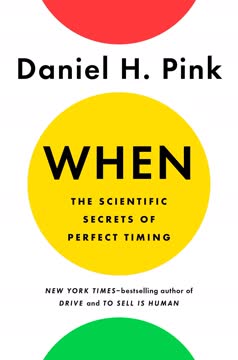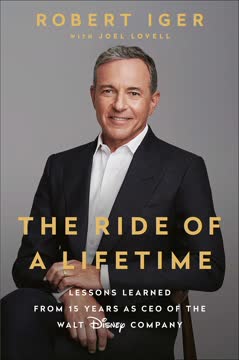つの重要なポイント
1. 創造性はどこにでもあり、発見を待っている
「本当の創造性は、死んだ芸術の専門博物館には存在しない。本当の創造性は、生きていて、毎日どこにでも起こっている。」
創造性は遍在する。 それは日常の問題解決から革新的なビジネス戦略に至るまで、予期しない場所で見つけることができる。重要なのは、さまざまな文脈で創造的な思考を認識し、育む能力を養うことだ。
創造的な筋肉を鍛える方法:
- 日常生活で創造性を観察する
- 創造的な解決策を議論し分析する
- 従来の考え方に挑戦する
- 慣れ親しんだ状況を再解釈する練習をする
周囲の創造性を積極的に探し、関与することで、自分自身の創造力を強化し、生活や仕事のさまざまな側面に応用することができる。
2. 本当の創造性は異なる視点で問題を解決する
「止められないなら、操縦しろ。」
問題を再構築する。 真の創造性は、従来の解決策に従うのではなく、新しい視点から挑戦に取り組むことが多い。これには、制約を受け入れたり、見かけ上の障害を機会に変えたりすることが含まれる。
創造的な問題解決の例:
- 道路の穴をアートに変えて修理を早める
- ロシアへの恐怖を利用して国の国際的地位を向上させる
- 捨てられた犬を囚人のリハビリツールに変える
視点を変え、問題を異なる角度から見ることで、最初は明らかでない革新的な解決策を見つけることができる。
3. 効果的なコミュニケーションは聴衆の言葉で話す
「聴衆に話すときは、自分の言葉ではなく、彼らの言葉で話す。それが彼らの心に入る唯一の方法だ。」
聴衆を知る。 成功するコミュニケーションは、ターゲットとなる聴衆の視点、ニーズ、動機を理解することが必要だ。これには、彼らの経験や価値観に共鳴するようにメッセージと伝達方法を適応させることが含まれる。
聴衆中心のコミュニケーション戦略:
- 聴衆の背景や興味を調査する
- 関連性のある比喩や例を使用する
- 専門用語や内部用語を避ける
- 代表的な聴衆メンバーでメッセージをテストする
聴衆の視点を優先することで、コミュニケーターはより影響力のある説得力のあるメッセージを作成し、意図した受け手と真に繋がることができる。
4. 成功する広告にはインパクトが重要
「行動を引き起こすものは注意を引くものだ。注意を引くものは見られるものだ。」
目立たなければ無視される。 情報と広告が溢れる世界では、インパクトを作り出すことが、聴衆の注意を引き、行動を促すために不可欠だ。これには、大胆で予想外、または破壊的なアプローチが必要なことが多い。
インパクトのある広告の要素:
- 視覚的な独自性
- 感情的な共鳴
- 予想外または驚きの要素
- 明確で記憶に残るメッセージ
- 聴衆のニーズや欲望に関連する
広告にインパクトを優先することで、マーケターはノイズを突破し、注目され、記憶され、行動に移されるキャンペーンを作成することができる。
5. データと技術はツールであり、解決策ではない
「技術とデータの問題ではなく、常に人々の問題だ。」
人間の洞察は代替不可能。 データと技術は貴重な情報と能力を提供するが、それらは人間の創造性と意思決定を支援するツールとして見なされるべきであり、それらの代替品としてではない。
データと人間の洞察のバランス:
- データを創造的な決定を導くために使用するが、指示させない
- 定量的および定性的な研究を組み合わせる
- データとアルゴリズムの限界を認識する
- 聴衆を理解する際に人間の共感と直感を優先する
人間中心の思考に焦点を当て続けることで、マーケターと広告主はデータと技術を効果的に活用しながら、成功するコミュニケーションを推進する基本的な人間要素を見失わないようにすることができる。
6. 恐怖と不快感がイノベーションを促進する
「本当の破壊は不快だ。」
不快感を受け入れる。 真のイノベーションは、快適ゾーンを超え、確立された規範に挑戦することを必要とすることが多い。恐怖と不快感は、境界を押し広げ、新しい領域を探求していることの指標となることがある。
恐怖と不快感を活用する:
- 恐怖を機会の兆候として認識する
- 計算されたリスクを奨励する
- 実験と失敗のための安全な空間を作る
- 挑戦を成長の機会として再構築する
不快感を受け入れ、恐怖を抑止力ではなく動機として使用することで、個人や組織は真に革新的な解決策やアプローチを発見することができる。
7. 創造性は仮定と幻想を問い直すことを必要とする
「物事を変えずに変えることはできない。」
現状に挑戦する。 創造的な思考は、しばしば深く根付いた仮定や幻想を特定し、問い直すことを含む。このプロセスは、新しい可能性やイノベーションの機会を明らかにすることができる。
仮定を問い直す戦略:
- 「常識」を定期的に見直し、挑戦する
- 多様な視点や意見を求める
- 確立されたプロセスを逆転または変更する実験を行う
- 支配的な信念に反する例を探す
健全な懐疑心と好奇心の心構えを育むことで、個人は制限的な信念から解放され、他の人が見逃すかもしれない創造的な解決策を見つけることができる。
8. 戦略には犠牲と集中が必要
「戦略は犠牲だ。」
無情に優先順位をつける。 効果的な戦略は、しばしば余分な要素を手放し、本当に重要なものに集中することを必要とする。この簡素化と集中のプロセスは、より強力で影響力のある結果をもたらすことができる。
戦略的集中の実施:
- 主要な目標と優先事項を特定する
- 不要な要素を排除または最小化する
- 重要な影響領域にリソースを集中させる
- 戦略的選択を継続的に再評価し、洗練する
戦略的犠牲の概念を受け入れることで、組織は影響力とリソースを最大化するためのより集中した効果的なアプローチを作成することができる。
9. 人間の行動を理解することがマーケティング成功の鍵
「物語がなければ、それはただの普通の石だった。物語と武装した警備員があれば、それは彼らの町に来たときに見なければならないものになった。」
人間の心理に訴える。 成功するマーケティングと広告は、しばしば人間の行動、動機、意思決定プロセスを深く理解することに依存する。これらの洞察を活用することで、マーケターはより魅力的で効果的なキャンペーンを作成することができる。
行動洞察の適用:
- 物語を使用して感情的なつながりを作る
- 社会的証明と権威を活用する
- 認知バイアスを理解し対処する
- 適切な場合には希少性や排他性を作り出す
人間の行動の微妙な理解に基づいてマーケティング戦略を構築することで、広告主はより共鳴し、説得力のあるキャンペーンを作成し、実際の結果を促進することができる。
10. 広告の創造性は普通の人々とつながる必要がある
「私たちは、通りの人々のためではなく、仲間の承認のために私たちがすることをする。」
現実に根ざす。 効果的な広告は、普通の人々の日常の経験や視点とのつながりを維持することが必要だ。この現実とのつながりを失うと、効果がないか、時代遅れのキャンペーンになる可能性がある。
つながりを維持する戦略:
- 多様な消費者グループと定期的に交流する
- フィールドリサーチを行い、実際の行動を観察する
- 業界外の個人とアイデアやコンセプトをテストする
- 業界のエコーチェンバーや集団思考を避ける
普通の人々との真のつながりを優先することで、広告主はより共感でき、影響力があり、効果的なキャンペーンを作成し、意図した聴衆に共鳴することができる。
最終更新日:
FAQ
What's "Creative Blindness (And How To Cure It)" about?
- Exploration of Creativity: The book delves into the concept of "creative blindness," where individuals fail to see creative opportunities around them.
- Real-life Stories: It uses real-life stories to illustrate how creative thinking can solve problems in unexpected ways.
- Corkscrew Thinking: The author introduces the idea of "corkscrew thinking," a method of approaching problems from unconventional angles.
- Practical Advice: It offers practical advice on how to develop and harness creative thinking in everyday life.
Why should I read "Creative Blindness (And How To Cure It)" by Dave Trott?
- Enhance Creativity: The book provides insights into enhancing your creative thinking skills, which are valuable in both personal and professional settings.
- Engaging Stories: It uses engaging and relatable stories to illustrate creative problem-solving, making it an enjoyable read.
- Practical Applications: The advice is practical and applicable to real-world situations, making it useful for anyone looking to improve their creative abilities.
- Unique Perspective: Dave Trott's unique perspective on creativity challenges conventional thinking and encourages readers to think differently.
What are the key takeaways of "Creative Blindness (And How To Cure It)"?
- Creativity is Everywhere: Creativity can be found in everyday situations if you know how to look for it.
- Corkscrew Thinking: Approaching problems from unconventional angles can lead to innovative solutions.
- Practical Creativity: Creativity is not just for artists; it can be applied in business, problem-solving, and daily life.
- Overcoming Creative Blindness: By exercising your creative muscle, you can overcome creative blindness and see opportunities where others see obstacles.
What is "corkscrew thinking" as described in "Creative Blindness (And How To Cure It)"?
- Non-linear Approach: Corkscrew thinking involves approaching problems in a non-linear, unconventional way.
- Problem as Opportunity: It encourages seeing problems as opportunities for creative solutions.
- Historical Examples: The book provides historical examples, such as Bletchley Park and the Sten gun, to illustrate corkscrew thinking.
- Secret Weapon: Described as a secret weapon in creativity, it can give individuals a competitive edge.
How does Dave Trott suggest overcoming creative blindness?
- Spot Creativity: Learn to spot creativity in everyday situations, from work to daily routines.
- Exercise Creativity: Like a muscle, creativity needs to be exercised regularly to grow stronger.
- Discuss and Share: Engage in discussions about creativity to broaden your perspective and influence others.
- Practical Exercises: The book offers practical exercises and examples to help readers develop their creative skills.
What are some real-life examples of creative thinking in "Creative Blindness (And How To Cure It)"?
- Washington Redskins Sting: A sting operation used free game tickets to capture fugitives, demonstrating creative problem-solving.
- Friendship Benches in Zimbabwe: Grandmothers were trained to provide therapy, turning a lack of psychiatrists into an opportunity.
- Vulcan, West Virginia Bridge: A creative letter to the Russian embassy led to funding for a much-needed bridge.
- Girl Scout Cookie Sales: A Girl Scout sold cookies outside a marijuana dispensary, capitalizing on the munchies effect.
What is the significance of "The Ploughman’s Lunch" story in the book?
- Invented Tradition: The Ploughman’s Lunch was a marketing invention, not a historical tradition.
- Repackaging History: It shows how history can be repackaged to create a compelling narrative.
- Marketing Lesson: Demonstrates the power of storytelling in marketing to create perceived value.
- Cultural Impact: The story became part of national memory, illustrating the impact of creative marketing.
How does "Creative Blindness (And How To Cure It)" address the role of fear in creativity?
- Fear as a Tool: The book suggests that fear can be a valuable tool for entrepreneurs and creative thinkers.
- Steve Jobs Example: Steve Jobs used fear of competition to drive innovation, leading to the creation of the iPhone.
- Evolutionary Advantage: Fear is presented as an evolutionary advantage that keeps species, and businesses, alert and competitive.
- Embrace Fear: Encourages readers to embrace fear as a motivator for creative solutions.
What are some of the best quotes from "Creative Blindness (And How To Cure It)" and what do they mean?
- "Creativity is your legal unfair advantage." This quote emphasizes that creativity can give you a competitive edge in a fair and legal way.
- "The difficulty lies not so much in developing new ideas, as in escaping from the old ones." It highlights the challenge of breaking free from conventional thinking to embrace new ideas.
- "Strategy is sacrifice." This quote underscores the importance of focusing on what truly matters and letting go of the rest to achieve strategic goals.
- "Simple is harder than complicated." It suggests that achieving simplicity requires more effort and creativity than complexity.
How does Dave Trott illustrate the concept of "creative impact" in the book?
- Barney the Parrot: A parrot's foul language brought attention to a wildlife sanctuary, illustrating how being different can create impact.
- Show Don’t Tell: The book emphasizes the power of demonstration over claims, using historical advertising examples.
- Unfriendly Fire: A story about the Austrian army highlights how overthinking and fear can lead to self-defeat, stressing the importance of clear communication.
- Advertising Lessons: The book provides lessons on how impactful advertising can change behavior and perception.
What is the role of "practical creativity" in "Creative Blindness (And How To Cure It)"?
- Triage Thinking: Focus on where your efforts will make the most difference, akin to medical triage.
- Pareto Principle: Apply the 80/20 rule to focus on the most impactful areas of your work or business.
- Problem Solving: View problems as opportunities for creative solutions, as demonstrated by various real-life examples.
- Simplification: Emphasizes the power of simplification in achieving creative breakthroughs.
How does "Creative Blindness (And How To Cure It)" address the concept of "creative surprises"?
- Unexpected Outcomes: The book discusses how unexpected outcomes can lead to creative breakthroughs.
- Backfire Effect: Illustrates how perceived threats can drive demand, as seen in the gun industry under Obama.
- Boys with Toys: A story about a Russian submarine highlights the importance of understanding different perspectives.
- Hold On a Minute: Myer's creative approach to hold music turned a negative experience into a positive one, showing how small changes can have a big impact.
レビュー
本書『クリエイティブ・ブラインドネス(そしてその治療法)』は、創造的な問題解決を示す短くてインスピレーションに満ちた物語のコレクションとして高く評価されている。読者は本書の魅力的な文体、実践的な洞察、そしてさまざまな分野からの多様な例を称賛している。多くの人々が、本書を広告やマーケティングの枠を超えて考えさせられる内容だと感じている。本書は創造性を刺激し、枠にとらわれない思考を促す力があると評価されている。一部の批評家は逸話の繰り返しを指摘しているが、ほとんどのレビュアーは創造的思考スキルを伸ばしたいと考える人にとって、楽しく価値のある一冊だと考えている。
Similar Books















